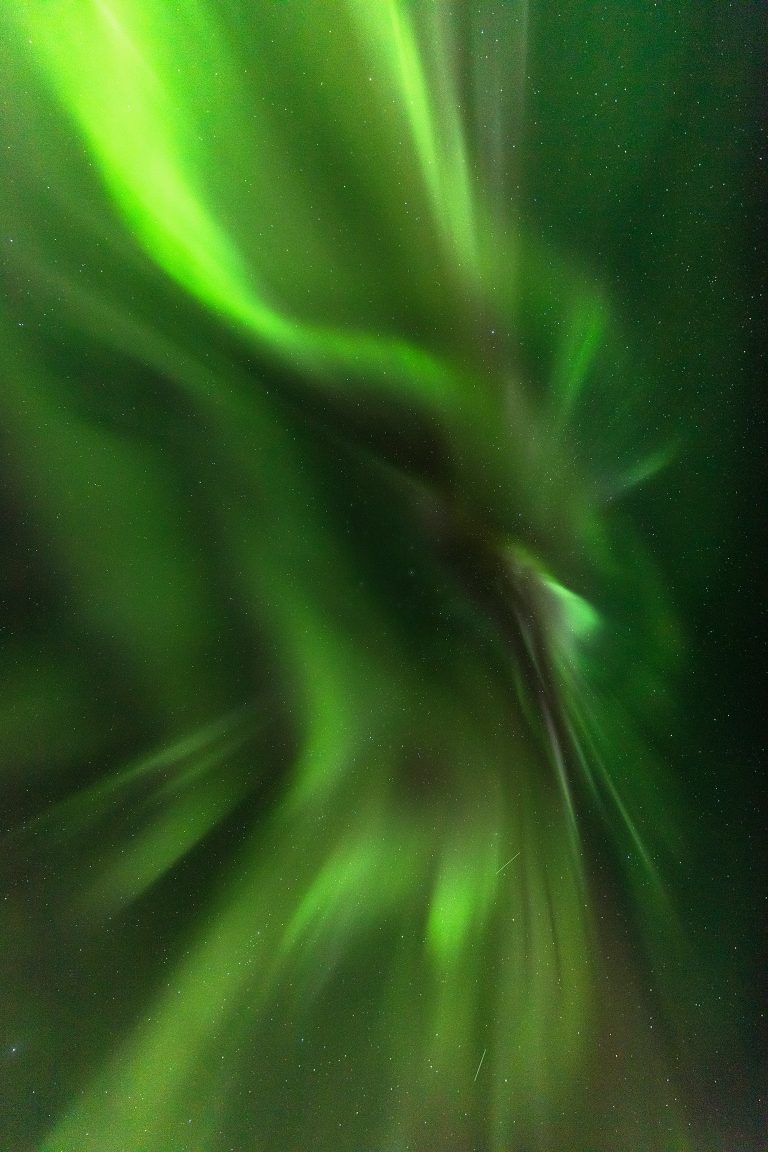Tips to see the Auroras
The Auroras (Australis and Borealis) happen during Earth’s day and night time. They are one of the wonderful ways in which Nature shows-off its beauty and supremacy; and they are definitely a must-see, at least once in your lifetime.
To see them, here are some tips to keep in mind:
Geomagnetic activity
If the geomagnetic field of the Earth is active, which is determined by solar activity, then the auroras will be brighter and move further away from the poles. The level of geomagnetic activity is measured by the planetary K or «Kp» index, which ranges from 0 to 9.
Kp from 0 to 2: there won’t be much activity; near the poles; dim intensity.
Kp from 3 to 5: there shall be more activity, both in formations and motion; they will be moving further from the poles; brighter. One can pleasantly observe them from the right places.
Kp from 6 to 7: active and with formations and motion; they go further away from the poles; quite bright.
Kp from 8 to 9: very active; they go further from the poles and towards the equator; very bright. This Kp shows when big solar storms happen (G5), they have the best visibility and one can see the best dancing auroras. The auroral oval can normally be observed from many places on Earth.
Location, light and timing
Location: It is important to be in the poles or close to them. With an unobstructed view and facing the the direction of the aurora, it can be seen up to 1000 kilometres away. From the right place, it can even be properly observed from Kp3, as stated by NOAA.
Light: It must be dark. It is rare to be able to spot the lights during our daytime, even if the auroras happen in both our days and nights. The light of the Sun can block the possibilities of seeing them during the day, so one should go at night. A full moon can also lower the chances of seeing the lights. Avoid big cities and even civilization, as light pollution can also diminish the likelihood of enjoying them.
Timing: Two factors are important in this section: time of the year and hour of the night. The auroras show in the poles of our planets, where we have long summer days and long winter nights, therefore winter being the best time to go. It is important to consider that it is also winter the season in which meteorology shows us best how our skies can be covered by clouds, rain or snow, so it is good to check the weather forecast. In the Northern Hemisphere, the best time to spot them would be between August and April, and in the Southern Hemisphere between April and October. Regarding the time of the night, it is believed that the best time is one or two hours before and after midnight (which translates into 10 pm to 2 am local time). In any case, between dusk and dawn.
Opportunity and preparedness
What a bummer it would be to prepare a trip at the right time, right destination, and not be lucky enough to see them. Unfortunately, that can happen. So always take advantage of all opportunities that may cross your way. Plan a longer time in the region, do your research and prepare. Be willing to stay awake all night -or many hours to say the least-. The eye also needs to adapt to the darkness, to observe the skies, to learn and know what to look for. Be patient, as their motion and movement can make them «come and go».
Wear really warm clothes and layer up (so you can also layer down if needed). One of my biggest tips in this section: wool. Merino wool if possible. Wool helps regulate temperature, keeping you cool when it warms up and keeping you warm when it cools down. An inner layer of breathable technical thermal clothing can be ok too. Yet I insist: wool. Avoid cotton, as it tends to cool down and it is not very comfortable once one starts to sweat. Down coats are wonderful to keep you warm (in my top two types of coats I have ever owned!). It is crucial that the outer layer (insulate or thinsulate) is wind and waterproof, both bottoms and top. Don’t forget a good hat (which covers the ears), a neck gaiter (wool!), gloves, socks (wool!) and good winter shoes. Making sure we are well-dressed for the cold is crucial to avoid getting sick and to be able to be exposed to the cold weather that usually accompanies these sightings.
If you own a DSLR camera or a mobile phone which can be put into manual settings, learn how to use them and shoot raw. If you have a smartphone and do not know how to use manual mode or just want to capture something «quick» for the memories, remember to activate «night mode» so the phone calculates exposition and balance on its own. Bring an extra portable charger with you (power bank) just in case – cold climate makes batteries last less time.
Bring some food and drinks to keep you warm, and enjoy. The Auroras are a phenomenon to observe patiently and joyfully, being in awe with Nature.

Important
IMPORTANT: Due to the fact that this is a natural occurring phenomenon, it is never 100% possible to guarantee visibility. I was recently asked «are you sure that they will be seen?», and I responded «it is Nature, no one can ever be sure». These are mere guides, based on science, probability and experience, which can help us to enjoy our beautiful Nature.
